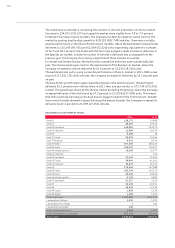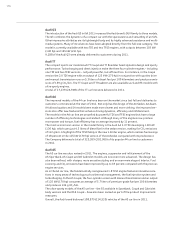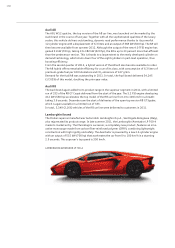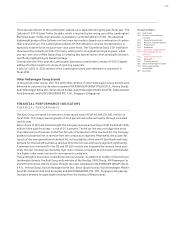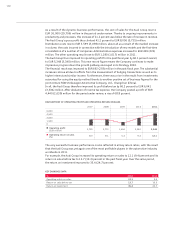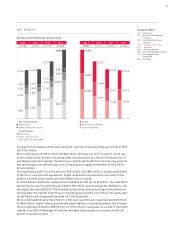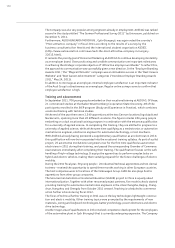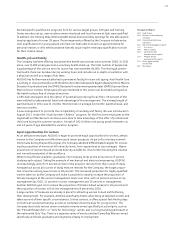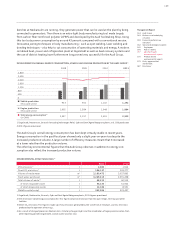Audi 2011 Annual Report Download - page 167
Download and view the complete annual report
Please find page 167 of the 2011 Audi annual report below. You can navigate through the pages in the report by either clicking on the pages listed below, or by using the keyword search tool below to find specific information within the annual report.
164
The Company was also very popular among engineers already in employment. AUDI AG was ranked
second in the study entitled “The German Professional Survey 2011” by Universum, published on
December 5, 2011.
Furthermore, AUDI HUNGARIA MOTOR Kft., Győr (Hungary), was again voted the country’s
“Most attractive company” in fiscal 2011 according to the results of a survey by the
business consultants Aon Hewitt and the international student organization AIESEC
(http://www.autoevolution.com/news/audi-the-most-attractive-company-in-hungary-
32615.html).
It remains the priority goal of Personnel Marketing at AUDI AG to continue developing its identity
as an employer brand. Clear positioning and credible communication are important milestones
in achieving the strategic corporate objective of “Attractive employer worldwide.” To reflect this,
the approach to communication was successfully given a new direction. In the “Employer Branding
Awards 2011,” the “Magical Moments” campaign was an immediate success in the “Best Careers
Website” and “Best Careers Advertisement” categories (“trendence Employer Branding Awards
2011,” May 24, 2011).
In addition to its image as an employer, internal employee satisfaction is an important indicator
of the Audi Group’s attractiveness as an employer. Regular online surveys serve to confirm that
employee satisfaction is high.
Training and advancement
In September 2011, 706 young people embarked on their vocational training at AUDI AG. Of these,
21 commenced studies at the Baden-Wuerttemberg Cooperative State University. 48 of the
participants enrolled in the StEP program (Study and Experience in Practice), which combines
vocational training with technical studies.
At the end of the year there were 2,349 apprentices at the two German locations Ingolstadt and
Neckarsulm, spanning more than 20 different vocations. The figure includes 184 young people
embarking on a dual vocational training program in combination with the entrance qualification
for a university of applied science. In completing this training, they are entitled to progress to a
university of applied science, while at the same time qualifying as a mechatronics or automotive
mechatronics engineer, electronics engineer for automation technology, or tool mechanic.
With AUDI AG already having pioneered a supplementary qualification as an electrician in 2010,
this qualification will now be incorporated into the vocational training syllabus. As part of a pilot
project, 25 automotive mechatronics engineers now for the first time qualified as automotive
electricians in 2011 during their training, and passed the corresponding Chamber of Commerce
examinations immediately after completing their training. The qualification focuses on the safe
handling of high-voltage technology. It equips the apprentices to perform complex tasks on
hybrid and electric vehicles, making them suitably prepared for the future challenges of electric
mobility.
During the 2011 fiscal year, 30 young people – 20 industrial/technical apprentices and ten clerical
trainees – received the opportunity to spend three months working in other European countries.
The host companies were 12 locations of the Volkswagen Group. AUDI AG also plays host to
apprentices from other group companies.
The Sino-German Automotive Vocational Education (SGAVE) project in China is equally about
internationalization. Together with other renowned project partners, five model schools started
providing training for automotive mechatronics engineers in the cities Changsha, Beijing, Chang-
chun, Hangzhou and Chengdu from October 2011 onward. Teaching is scheduled to commence
at ten further schools during fiscal 2012.
The focus of technical further training in 2011 was on the key technologies lightweight construc-
tion and electric mobility. Other training topics were prompted by the requirements of new
materials, joining and bodywork technologies, battery technology, power electronics and electric
drive technology.
Another major area of qualifications in 2011 involved competence development for the employees
of the automotive plant in Győr (Hungary) that is currently undergoing expansion. The Company


